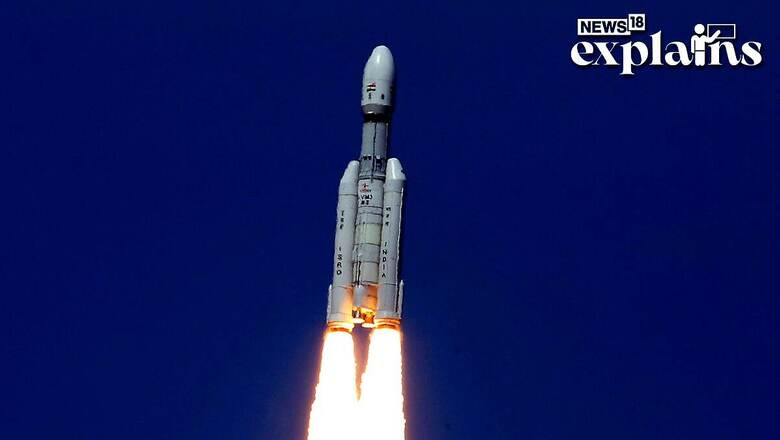
views
With a billion dreams riding on its back, Chandrayaan-3 is now edging closer to the moon. The spacecraft revolving around the moon completed its penultimate step and separated the 2,148 kg propulsion module from the lander which sits atop it.
The lander has now embarked on the most challenging phase of the mission. The ground team of the Indian Space Research Organisation (ISRO) would de-boost it and steer it closer to the moon until it reaches the final orbit from where it will attempt a successful touchdown on the moon on the evening of August 23.
The momentous occasion comes exactly four years after the space agency made its first shot at the south pole of the moon, but ended with a crash-landing.
WHAT HAPPENS POST-SEPARATION?
In order to ensure a smooth ride, ISRO had designed a propulsion module to carry the lander and rover till these reached a 100km lunar orbit. The integrated module weighed about 3,900 kg. On August 16, the agency successfully injected the module into an orbit of 153×163 km – just when another lunar spacecraft, Luna-25 of Russia, entered the orbit. With this, ISRO completed its last lunar-bound manoeuvre.
Even though the 2,148 kg propulsion module has met its main objective, it will not get redundant. Rather, it will continue to revolve in the lunar orbit using energy from the solar panels and conduct experiments for three to six months.
Scientists have integrated a Spectro-polarimetry of Habitable Planet Earth (SHAPE) payload in it which will enable it to study the spectral and polari-metric measurements of Earth from lunar orbit. The data is significant for future discoveries of smaller planets which can help scientists probe into life-sustaining conditions in various exoplanets.
PENULTIMATE STEP: LANDER DE-BOOST
ISRO would then conduct complex braking manoeuvres on the lander so that its orbit can be reduced to 100 X 30 km — much closer to the moon from where a successful landing can be attempted on Wednesday. It will be de-boosted and positioned over the south polar region of the moon.
The soft landing will be attempted on the evening of August 23. Post landing, the rover will come out of the lander and move on the lunar surface to conduct the designed experiments. While the lander weighs about 1,726 kg and carries three payloads, the rover carries two payloads with a total weight of 26 kg. Both are designed to remain functional for 14 Earth days which is equal to one Lunar day.
In order to ensure a soft touchdown, ISRO has given a higher flexibility to the spacecraft compared to its predecessor in 2019. During the last attempt, the lander had begun to turn rapidly in the last few minutes to reach the precise landing site but still fell short by half a kilometre and ended up crash-landing on the moon. However, the project team has chosen a much larger site for landing, and equipped the lander with additional sensors and hazard-detection system.
Both the lander and propulsion module will continue to communicate with the network of giant dish antennas and communication facilities operated by the Indian Deep Space Network (IDSN). Scientists are also planning to establish a contingency link with the Chandrayaan-2 orbiter which is circling around the moon since August 2019.
RUSSIA’s SPACECRAFT IN CLOSE RACE
Just as Chandrayaan 3 achieved a polar orbit around the moon, Russia’s Luna-25 spacecraft, too, entered the lunar orbit – six days after its launch. It will also keep revolving around the moon over the next five days and brace for a soft landing on August 21 – two days before ISRO’s planned attempt.
Both the countries are aiming for the south pole of the moon where they hope to find evidence of water molecules locked in the permanently shadowed craters.
While India returns to the moon after four years, Russia’s mission comes almost after five decades. It is part of the country’s mega plan to set up a lunar base with China in another 10 years.




















Comments
0 comment